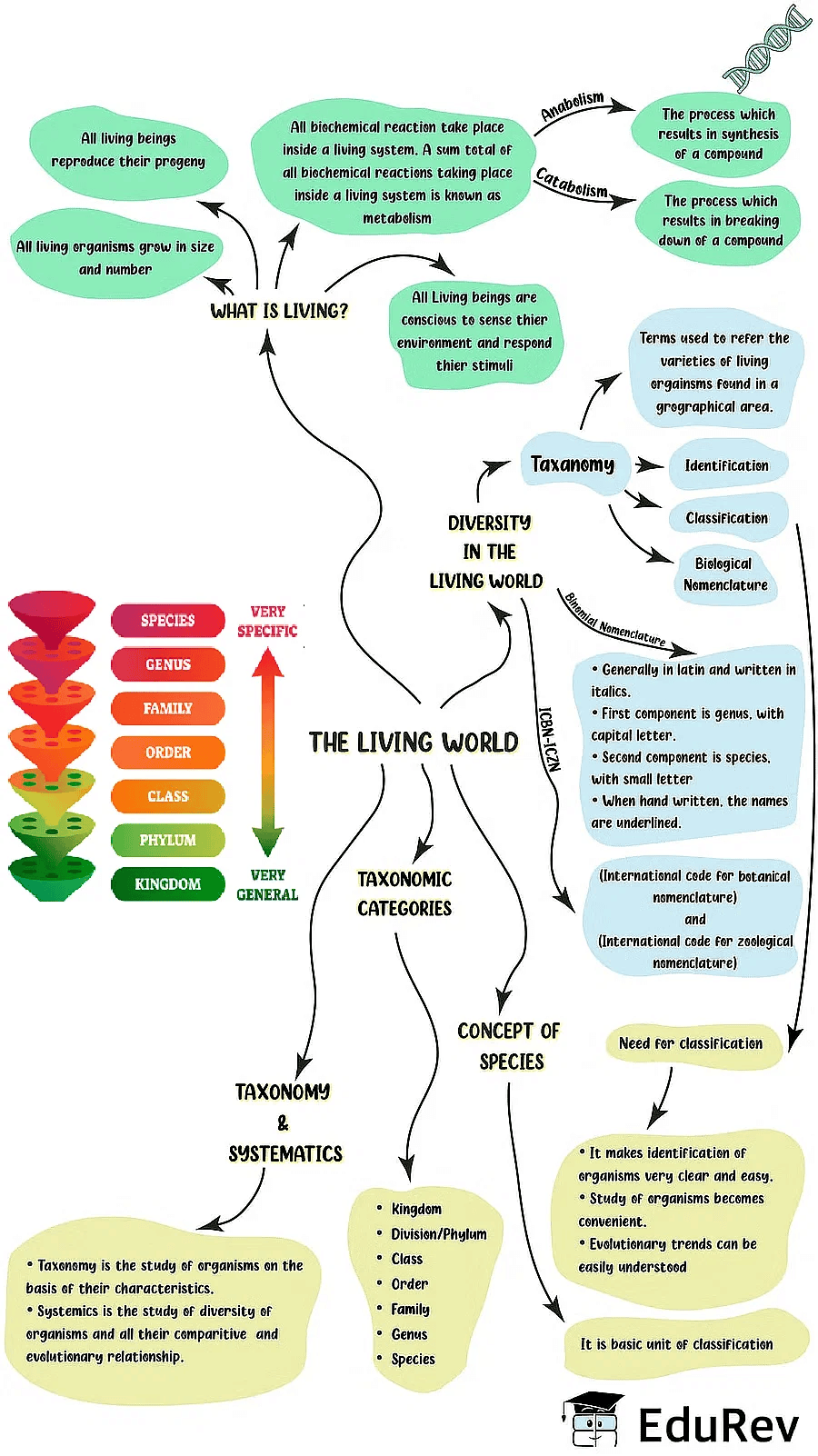NEET Exam > NEET Notes > Biology Class 11 > Mind Map: The Living World
Mind Map: The Living World | Biology Class 11 - NEET PDF Download

The document Mind Map: The Living World | Biology Class 11 - NEET is a part of the NEET Course Biology Class 11.
All you need of NEET at this link: NEET
|
169 videos|401 docs|136 tests
|
FAQs on Mind Map: The Living World - Biology Class 11 - NEET
| 1. What is the significance of biodiversity in the living world? |  |
Ans.Biodiversity refers to the variety of life on Earth, including the different species of plants, animals, and microorganisms. It is significant because it contributes to ecosystem stability, provides resources for food, medicine, and materials, and helps in maintaining ecological balance. High biodiversity also enables ecosystems to adapt to changes and recover from disturbances.
| 2. How do organisms interact with their environment in ecosystems? |  |
Ans.Organisms interact with their environment through various processes such as predation, competition, symbiosis, and nutrient cycling. These interactions help in maintaining the balance of ecosystems. For example, plants produce oxygen and food through photosynthesis, while animals contribute to nutrient cycling through their waste and decomposition.
| 3. What are the major biogeochemical cycles important for sustaining life? |  |
Ans.The major biogeochemical cycles include the water cycle, carbon cycle, nitrogen cycle, and phosphorus cycle. These cycles are crucial for recycling essential nutrients and maintaining ecosystem health. For instance, the carbon cycle regulates the amount of carbon dioxide in the atmosphere, which is vital for temperature regulation and plant growth.
| 4. How does natural selection contribute to evolution in the living world? |  |
Ans.Natural selection is a process whereby organisms better adapted to their environment tend to survive and reproduce more successfully. This leads to the gradual evolution of species over time as advantageous traits become more common within a population. It is a key mechanism of evolution, explaining the diversity of life forms on Earth.
| 5. What role do producers, consumers, and decomposers play in an ecosystem? |  |
Ans.Producers, such as plants and phytoplankton, convert solar energy into chemical energy through photosynthesis. Consumers, including herbivores and carnivores, depend on producers and other consumers for energy. Decomposers, like bacteria and fungi, break down dead organic matter, recycling nutrients back into the ecosystem. Together, they form a complex food web that sustains life.
Related Searches

















